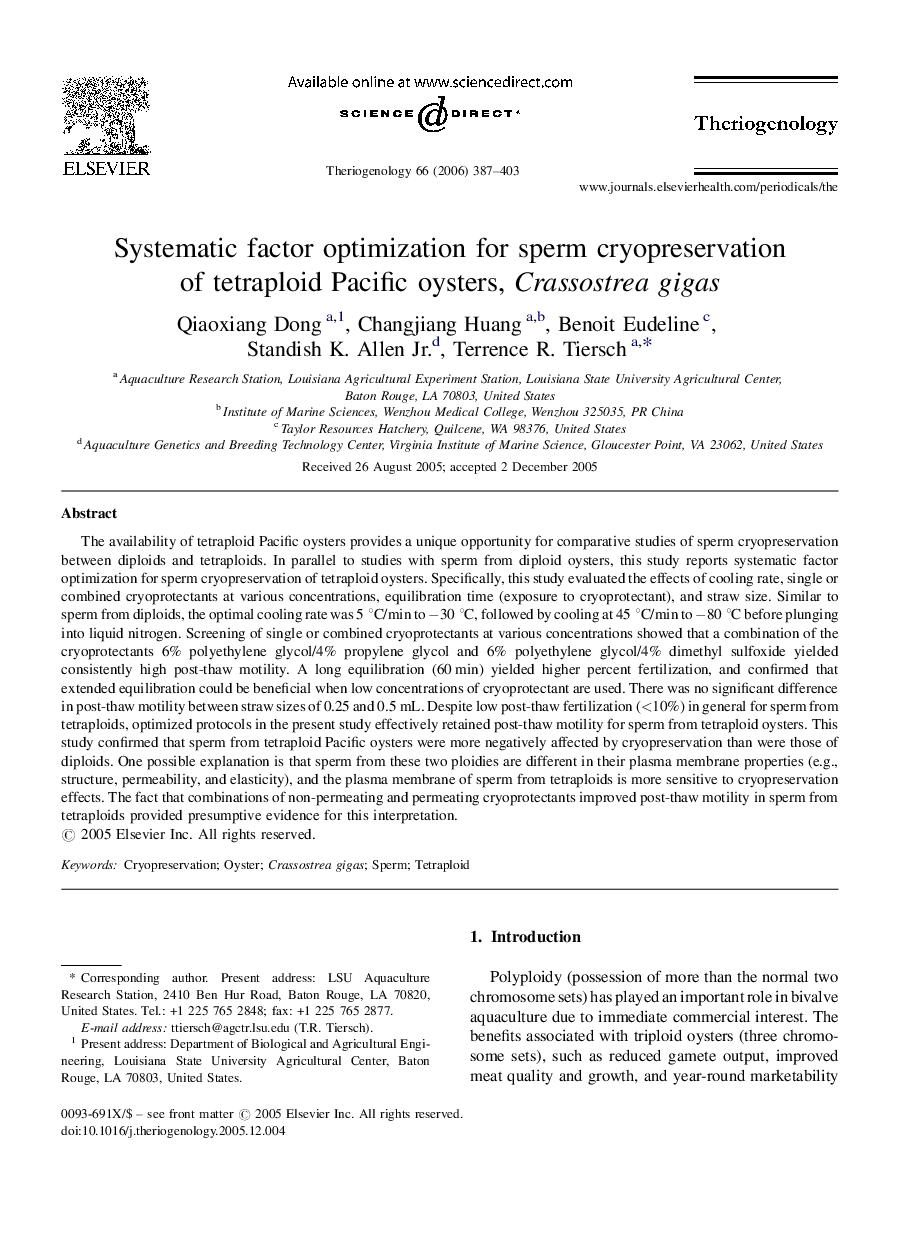| Article ID | Journal | Published Year | Pages | File Type |
|---|---|---|---|---|
| 2097091 | Theriogenology | 2006 | 17 Pages |
The availability of tetraploid Pacific oysters provides a unique opportunity for comparative studies of sperm cryopreservation between diploids and tetraploids. In parallel to studies with sperm from diploid oysters, this study reports systematic factor optimization for sperm cryopreservation of tetraploid oysters. Specifically, this study evaluated the effects of cooling rate, single or combined cryoprotectants at various concentrations, equilibration time (exposure to cryoprotectant), and straw size. Similar to sperm from diploids, the optimal cooling rate was 5 °C/min to −30 °C, followed by cooling at 45 °C/min to −80 °C before plunging into liquid nitrogen. Screening of single or combined cryoprotectants at various concentrations showed that a combination of the cryoprotectants 6% polyethylene glycol/4% propylene glycol and 6% polyethylene glycol/4% dimethyl sulfoxide yielded consistently high post-thaw motility. A long equilibration (60 min) yielded higher percent fertilization, and confirmed that extended equilibration could be beneficial when low concentrations of cryoprotectant are used. There was no significant difference in post-thaw motility between straw sizes of 0.25 and 0.5 mL. Despite low post-thaw fertilization (<10%) in general for sperm from tetraploids, optimized protocols in the present study effectively retained post-thaw motility for sperm from tetraploid oysters. This study confirmed that sperm from tetraploid Pacific oysters were more negatively affected by cryopreservation than were those of diploids. One possible explanation is that sperm from these two ploidies are different in their plasma membrane properties (e.g., structure, permeability, and elasticity), and the plasma membrane of sperm from tetraploids is more sensitive to cryopreservation effects. The fact that combinations of non-permeating and permeating cryoprotectants improved post-thaw motility in sperm from tetraploids provided presumptive evidence for this interpretation.
